A little while ago, we received a question from a reader about millipedes in her garden. Actually, the reader asked about the “worms” she found, but for reasons that will soon become clear, she definitely found millipedes in the garden, not worms. (People commonly mistake millipedes for worms – no harm, no foul.) She also sent a very nice picture of the millipede in her garden, which we have included below. The reader’s question was twofold: first, she was wondering if she found worms (no, although millipedes are sometimes called “thousand-legged worms”), and she was also wondering if these “worms” (millipedes) in her garden were harmful to her flowers and vegetables.
First, let’s take a look at the reader’s excellent picture (it’s definitely one of the better reader-submitted pictures we’ve received):
How do we know this is a millipede and not some type of worm (or other garden-dwelling creature, for that matter)? First and most obviously, you’ll notice that this creature has tons of legs, which is the mark of the millipede. This is also the mark of a centipede, but the creature pictured above, when examined very closely, appears to have two pairs of legs per body segment, a characteristic of millipedes. (Centipedes have only one set of legs per body segment.) Also, centipede legs extend from their body fairly substantially, whereas millipede legs do not – they are for the most part underneath their bodies. Finally, millipedes curl up into a tight spiral when they are disturbed, and this is exactly what the creature in the picture appears to be doing. So, we are as sure that our reader found millipedes as we’ll likely ever be about any answer we supply in response to a reader question.
As far as what type of millipede our reader found goes, we are less sure, largely because there are about 10,000 species of millipedes in the world, making them hard to precisely identify. However, this looks to us like a rusty millipede (Trigoniulus corallinus), and in any case it’s a standard garden millipede because the reader found hundreds among her plants. In general, millipedes are viewed as beneficial to gardening. They are detritivores that eat dead plant matter, a process that allows them to reintroduce organic matter into the soil. However, if millipedes are present in great enough numbers, and unfortunately our reader seems to be dealing with a fairly large number of them, they can harm gardens, mostly because they can sometimes cause damage to seedlings. They will also occasionally eat roots, which can of course hurt the affected plant. Again, though, millipedes are for the most part regarded as beneficial because of the crucial role they play in breaking down dead plants.
The reader didn’t mention any harm being done to her garden, so perhaps she doesn’t have a problematic number of millipedes. However, if she thinks she does, there are numerous sources online that can help with the issue. We’re always interested in organic solutions, and one we’ve read about involves pouring some type of citrus tea in her garden to reduce the number of millipedes in the soil. Also, millipedes thrive in cool, moist soil, so she might consider slightly drying out her soil by adding something like wood ash to it. Finally, millipedes of course need to eat to survive, so if there isn’t a ton of dead plant matter around, this could also help with an overpopulation of millipedes. Our reader wouldn’t want to have a large pile of decaying leaves right by her garden, for example.
To recap, our reader did not find worms, but rather millipedes, in her garden. Generally, finding millipedes in your garden is nothing to worry about, but if they are present in very large numbers, they can do some damage, so it is probably a good idea to take some measures to reduce the population in your garden if possible.
All About Worms is always free, always reader-supported. Your tips via CashApp, Venmo, or Paypal are appreciated! Receipts will come from ISIPP Publishing.
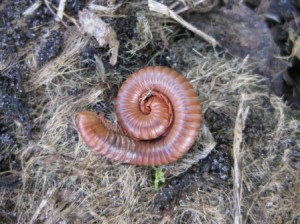



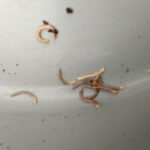
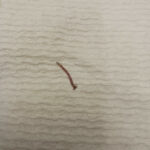
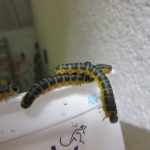
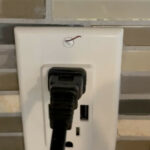
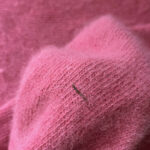

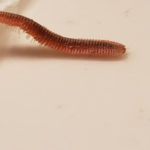
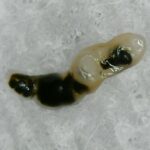


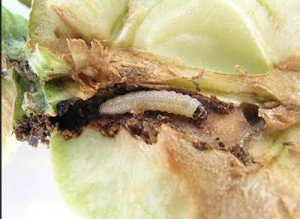
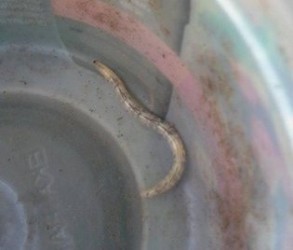


Small brown works with lots of legs are only in my birdbaths how do I get rid of them and what type of work is it?
Hello, I was just looking through my warm bed And putting an over ripe Banana in for them to eat, When I opened the 1st tub There was a mass, and I do mean mass! Of millipedes, They were babies and most likely knewly born or hatched, I kind of freaked out, Even though I know they are harmless to humans. I smashed them, As many as I could see, I guess you call that a knee jerk reaction, After I did that I googles it, And your site was the 1st to come up, I know nothing about them, Had no idea that they contributed as worms due to the Soil, (My question is, will they harm the worms in the worm bed?) For the record, There were probably 100 in total if not more.
I thank I found a Millipede like the one in the pic but it smelled like gas, did not thank they had bones but it crunched when I squeezed it and it was vary hard just wondering what it was because it smelled like gas did not leave from my hands with out a good smelling soap